EDITOR’S NOTE: Traveleater Espen – a Swedish food expert from Kinna – shares with us 20 traditional dishes you need to try on your next trip to Sweden.
When envisioning Swedes, you most likely think of blonde, blue-eyed, tall, and Viking-like people. Although we have ditched most of the brutal fighting, we still enjoy our feast after a long day.
But, what exactly does a traditional Swede nourish himself/herself on?
Learn about twenty of the most delicious traditional Swedish foods you must try when visiting Sweden (according to us).
Save This on Pinterest!
No time to read this article on traditional Swedish food? Click on the save button and pin it for later!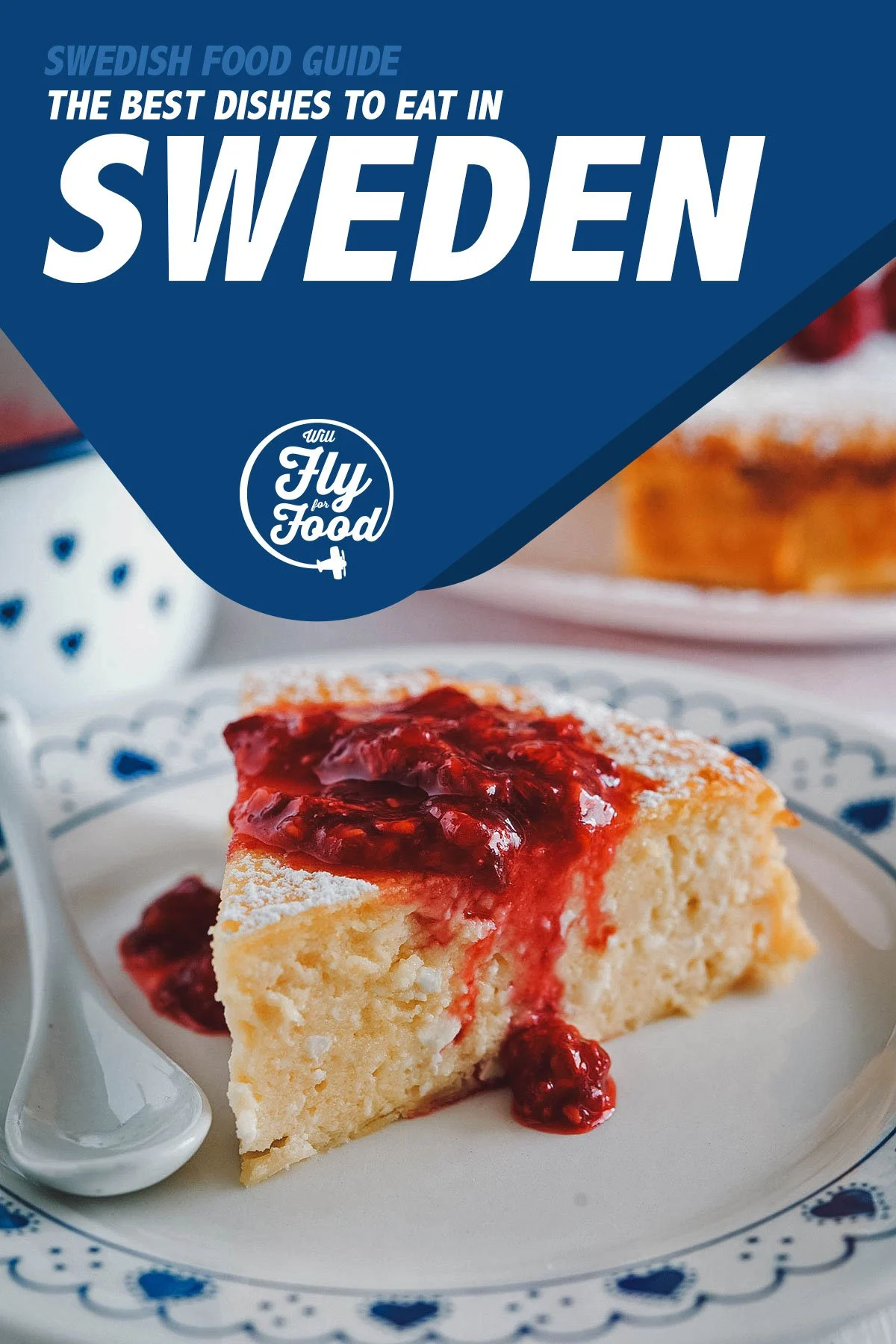
Photo by pingpongcat
WHAT IS TRADITIONAL SWEDISH CUISINE?
Swedish food ranges from savory, warm, comforting soul food to light and delicious seafood. With the biggest cities in Sweden all located next to the seas, you’ll find something to indulge in if you enjoy seafood.
Swedish cuisine is influenced by its geographical location and seasons. Harsh weather conditions forced the cuisine to make use of locally sourced ingredients and limited us to what was available in the wild. Game, meat, root vegetables like potatoes, and of course fish and shellfish are most common.
The local culture has also significantly influenced Swedish cuisine. Swedes are some of the most proficient coffee drinkers in the world. It’s largely linked to a special time of the day called fika. Enjoyed with friends, family, coworkers, or perhaps a new date, we often drink coffee served with different pastries, shrimp sandwiches, or other treats.
When discovering Swedish (and generally Nordic) food, a trend is noticeable. The historical methods for storing food during the colder months have influenced what Swedes eat now. One example is pickled herring, a delicious dish we’ll definitely cover in more detail in this article!
MUST-TRY SWEDISH DISHES
This article on traditional Swedish food has been organized by category to make it easier to digest. Click on a link to jump to any section of the guide.
STARTERS / SIDES
1. Raggmunk (with Fried Pork and Lingonberry Jam)
Raggmunk with fried pork and lingonberries is a delicious lunchtime meal that’s easy to make and even easier to enjoy.
These three simple ingredients create a magical meal. Locally sourced potatoes are grated into a batter and then fried like a pancake. Served with fried pork (or bacon) and fresh wild lingonberries, raggmunk is a great reason to skip breakfast and indulge in an early lunch, though many Swedes do enjoy this dish for breakfast as well.
As much as Swedes love them, potato pancakes aren’t unique to Sweden. Many European countries like Poland, Switzerland, Germany, Czechia, and Ireland have their own versions of fried potato pancakes. What makes raggmunk unique to Sweden is the fried pork and lingonberry jam.
Pork is plentiful in Sweden as vast open farmland allows for healthy (and delicious) pigs. Wild lingonberries grow like wildfire and are harvested fresh during the early fall season. These locally sourced ingredients aren’t just delicious, but they lower your carbon footprint as well.
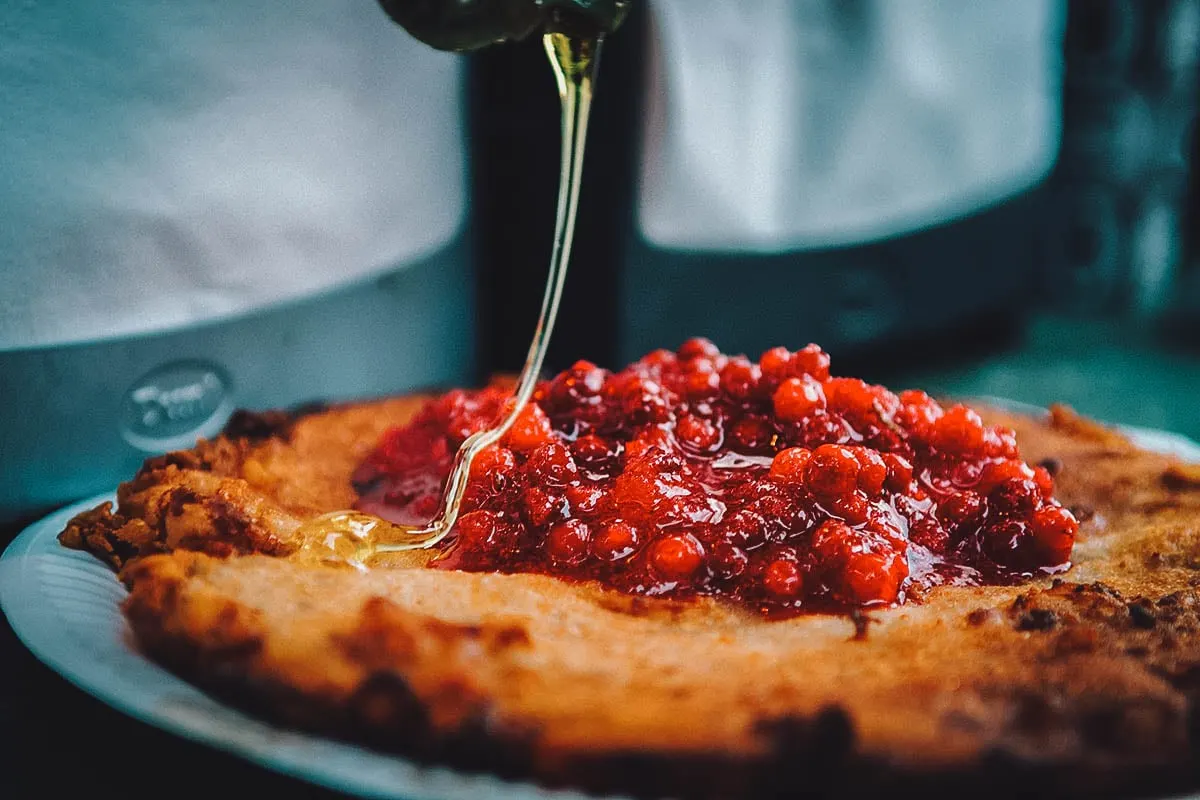
Photo by Linus Strandholm
2. Kroppkakor
Kroppkakor is an example of husmanskost, or traditional Swedish home-cooked food. Common near Småland, Öland, or Gotland, it refers to a type of boiled Swedish potato dumpling filled with onions and finely cut fried pork.
This beloved dish, most revered in Öland – a long, small island near the southeast coast of Sweden – has traditions dating back to the 1700s. An explorer traveled to Öland and would later return after getting a taste of kroppkakor. In his words, it was “an exceptionally succulent dish”.
If you find yourself on the beaches of Öland, then you need to enjoy kroppkakor for a traditional Swedish lunch.
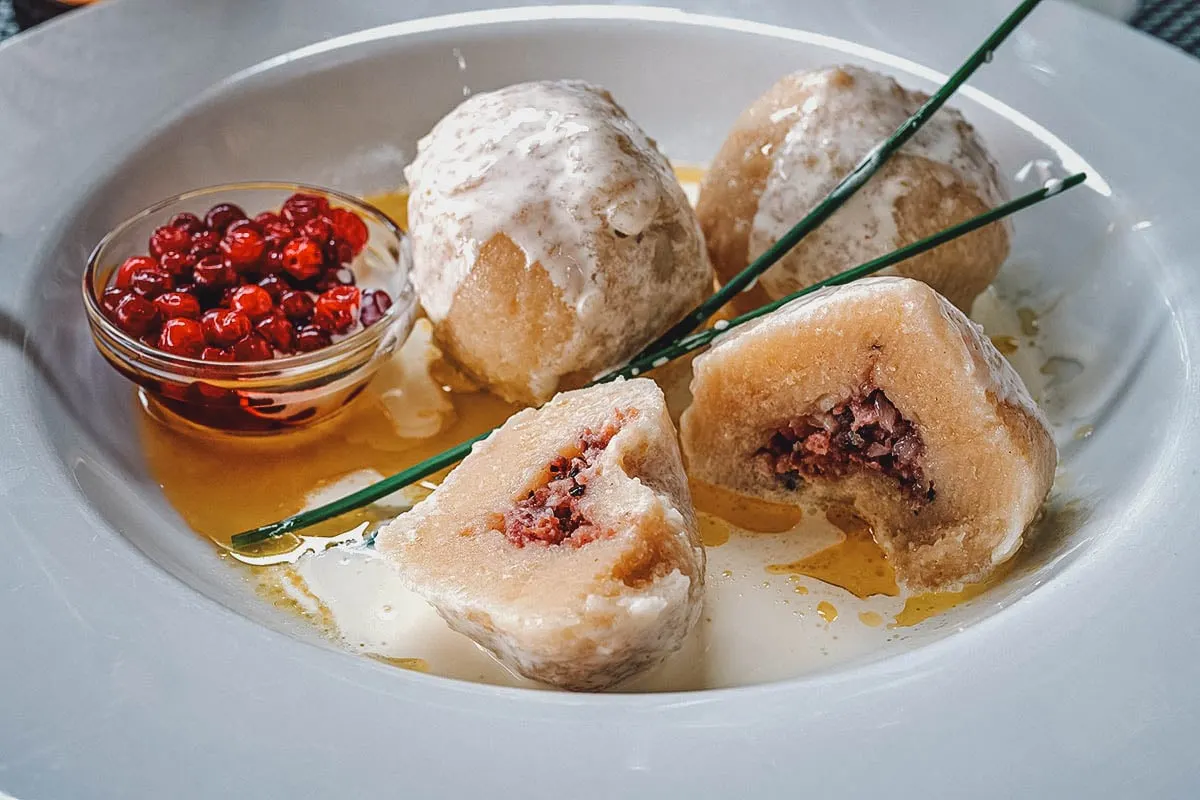
Photo by Rolf_52
3. Pitepalt
Pitepalt is related to kroppkakor, but it’s a little different. Its name is inherited from where the dish is eaten – Piteå – way up in the cold and shivering part of northern Sweden. This is also where it’s believed to have originated.
Like kroppkakor, pitepalt are meat-filled dumplings made with grated potatoes. While the former is made with pre-boiled potatoes and wheat flour, the latter is made mostly with raw potatoes and a mix of wheat and barley flour.
Pitepalt are served with lingonberry jam and are equally delicious when eaten fresh or reheated.
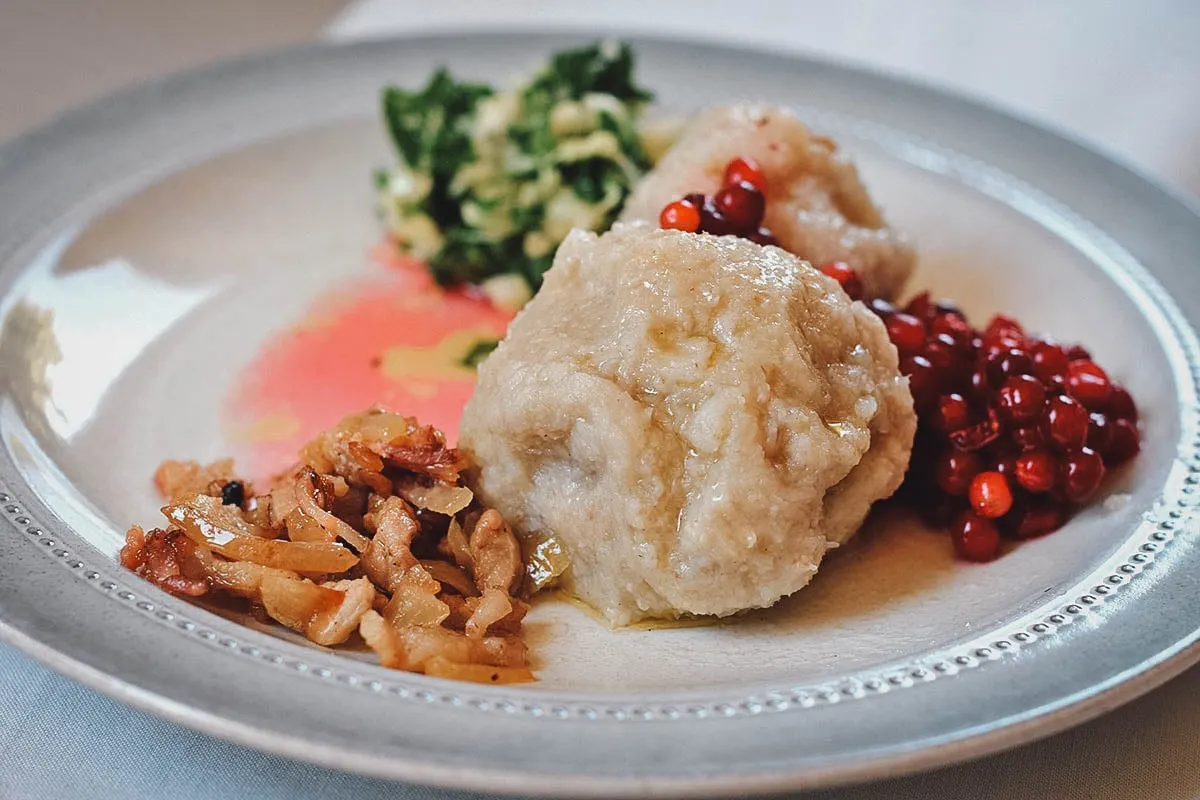
Photo by Johanna K M Nilsson
4. Pytt i Panna
Pytt i panna is a staple dish in every Swedish household. It consists of cubed potatoes cooked with onions and beef, or essentially any leftovers that you have laying around in the house. It’s a classic Swedish dish that’s best served with a sunny side-up egg, sliced pickled beetroot, and lingonberry jam. If you like, you can also jazz it up with some premium steak or bacon.
Pytt i panna is a common, easy-to-make dish that’s also enjoyed in other Nordic countries like Norway, Finland, and Denmark. What makes it unique to Sweden’s culture is the lingonberry jam and pickled beetroot.
Conveniently, if you like pytt i panna, then you can easily find ready-made frozen packs at the nearest Ikea in Sweden. But never ever mistake pre-made for homemade!
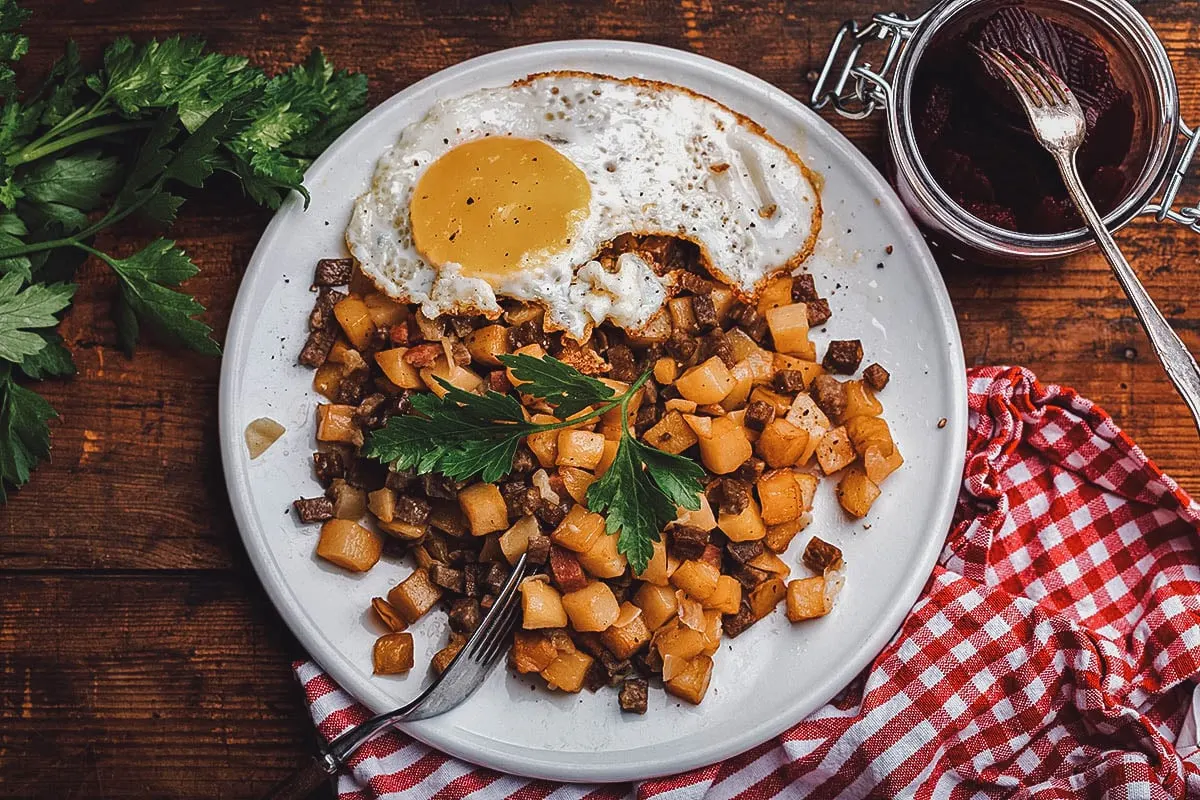
Photo by Angela Kotsell
SOUPS / STEWS
5. Ärtsoppa med Fläsk och Pannkakor
Ärtsoppa med fläsk och pannkakor literally means “pea soup with fried pork and pancakes”. This comforting duo is a Thursday tradition in Swedish schools, and even in the military.
Pea soup and pancakes is another great example of Swedish husmanskost. This traditional home-cooked meal is exactly what it sounds like – a thick yellow pea soup is enhanced with small pieces of pork and then followed by thin pancakes for dessert.
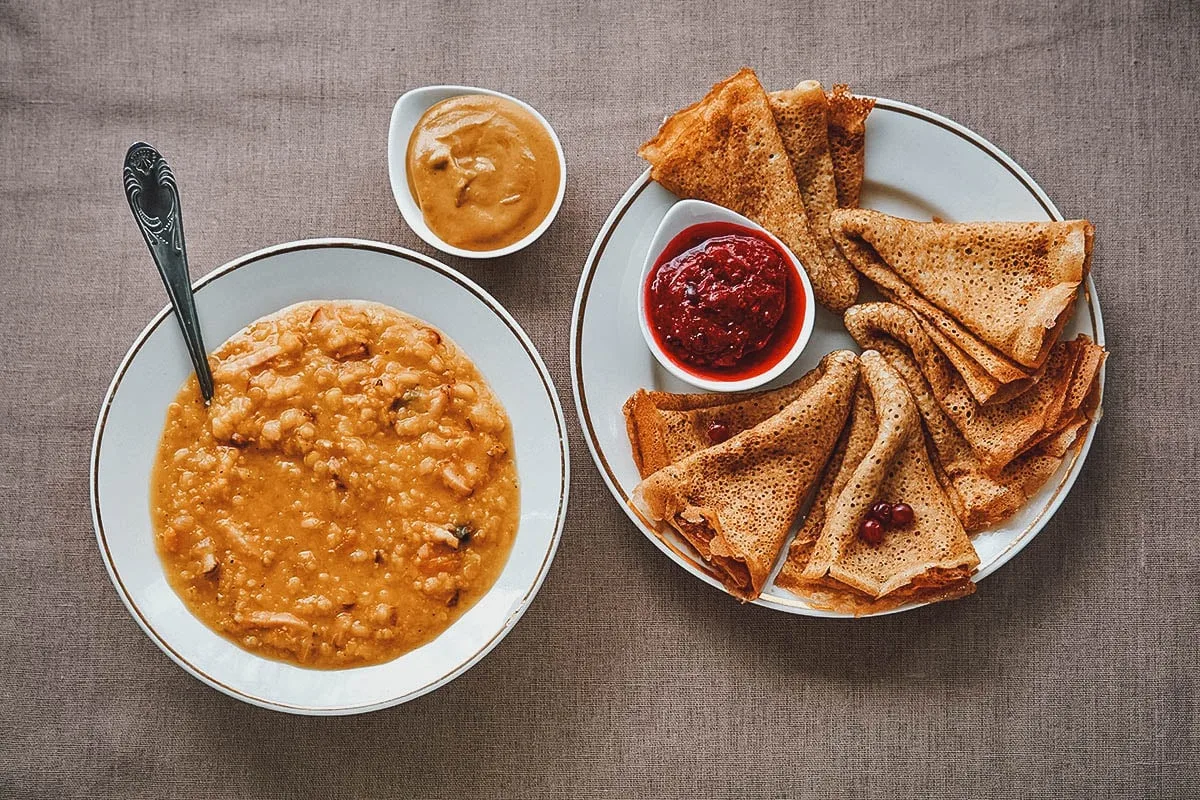
Photo by Iuliia Kochenkova
6. Kalops
Kalops is a Swedish-Finnish dish that’s commonly served during the late autumn and winter seasons. A nourishing dish, this warm and tasty delight gives us the nutrients and energy we need to endure the cold winter months.
Kalops is a type of Swedish beef stew flavored with onions, allspice, and bay leaf. It’s often served with boiled potatoes and pickled beetroot and makes for the perfect simple lunch in Sweden.
If you can, I recommend trying the more sophisticated version braised with red wine. Succulent and tender, the slow-cooked beef seemingly melts away as soon as it touches your lips.
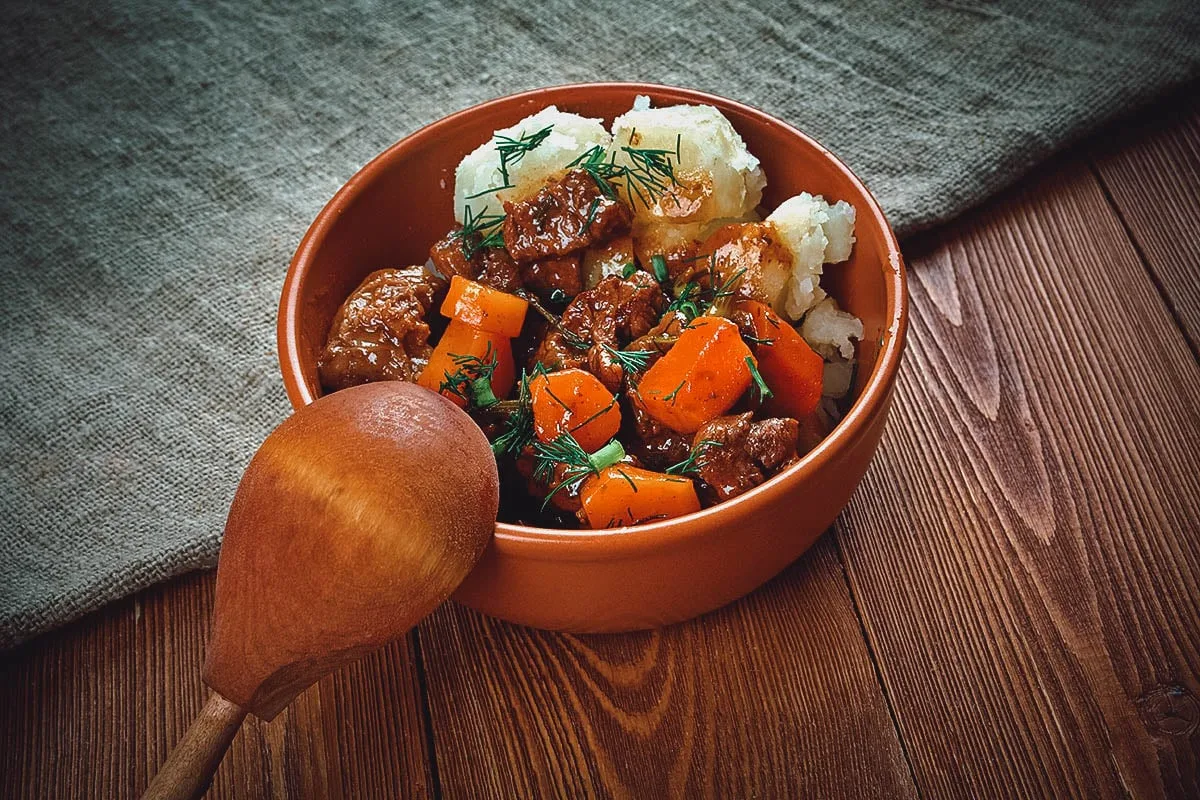
Photo by Fanfo
SEAFOOD
7. Pickled Herring
No list of traditional Swedish food can ever be complete without pickled herring. A staple dish at the Swedish Midsummer feast, pickled herring is served with boiled potatoes, sour cream, and chives, and always with lots of Snaps and singing!
Pickled herring is also a common sight on the Swedish Christmas table. It’s a culinary favorite that’s served in different ways throughout Sweden. New recipes are developed every year, ranging from curries to sweet, to sour, and many more.
The culinary heritage of pickled herring goes back to the most efficient way of storing fish, which was by pickling it. When you didn’t have access to refrigeration, the best way to preserve herring was to pickle it.
And the best part about herring? What it’s served with of course! Aside from the usual accompaniments like potatoes and sour cream, what excites us the most are the akvavit and other spirits commonly consumed during herring feasts. Get ready to raise your glass because pickled herring is often followed by belly-warming snaps!
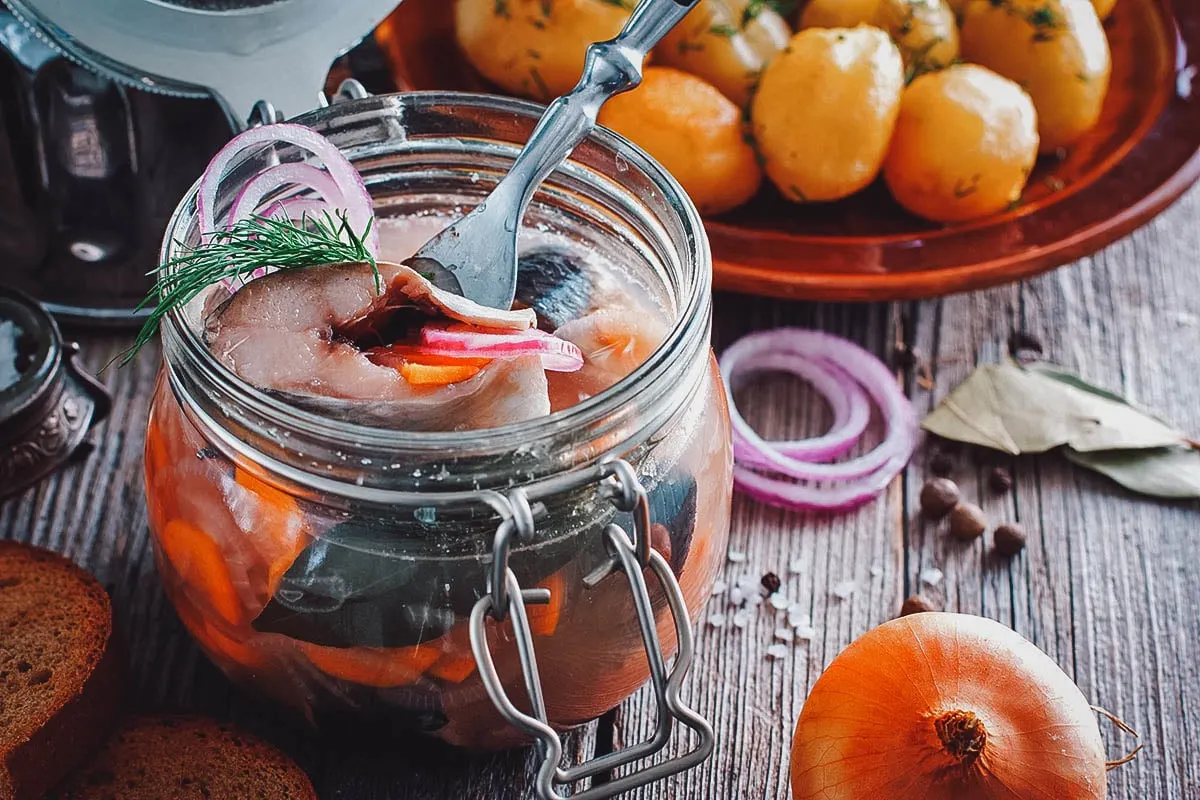
Photo by A. Zhuravleva
8. Stekt Strömming
Stekt stromming or fried herring has long been a favorite along the western coast of Sweden. Especially attractive for fish lovers, it’s usually served with mashed potatoes, peas, and you guessed it – lingonberry jam.
Although stekt stromming isn’t as common as it used to be in Swedish households, you can still find herring served at traditional Swedish restaurants along the country’s west coast. If you love fish, then you definitely need to try this specialty.
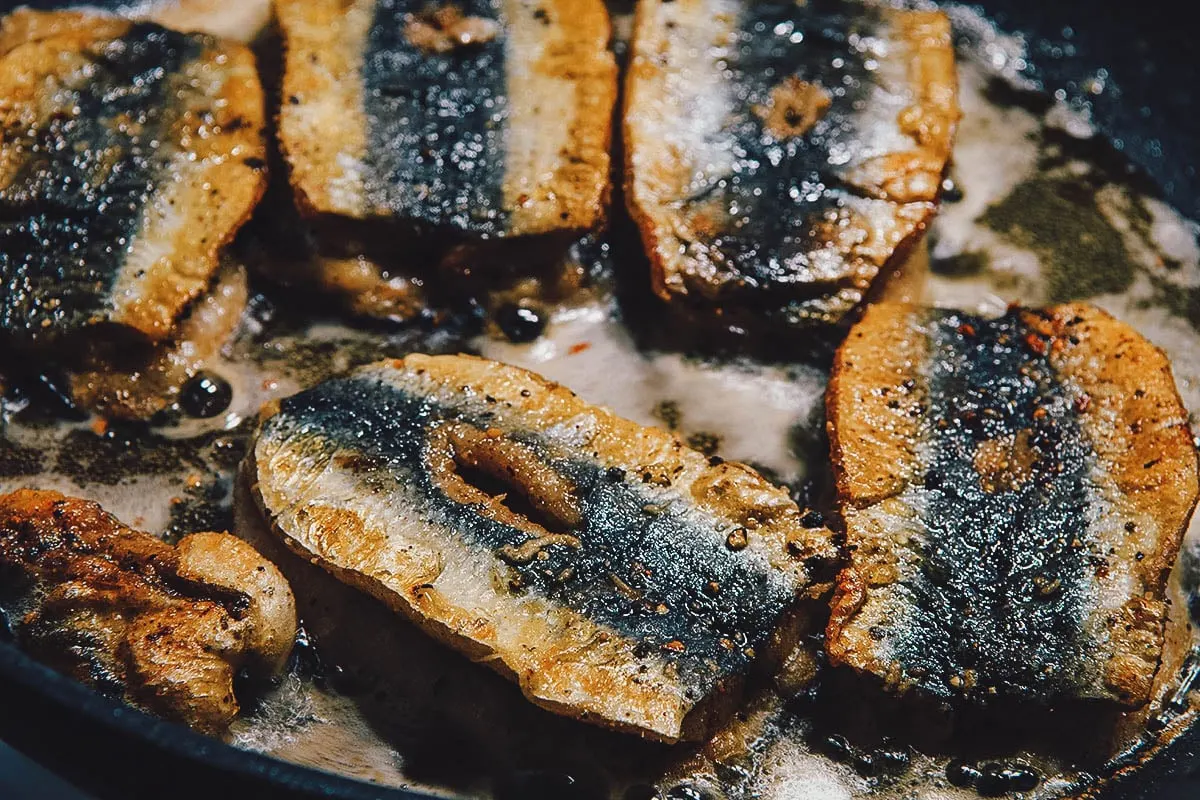
Photo by Linus Strandholm
9. Gravad Lax
Gravad lax (or gravlax) is a beloved traditional Swedish dish that’s made by curing salmon in dill, sugar, and salt. It’s often served with mustard dill dressing and potatoes. If you’re in the mood for a light but tasty meal (and you happen to love salmon), then this sushi-like dish will suit you well.
Gravad lax is commonly served at home and during holiday family gatherings in Sweden. For example, it’s a staple dish during Midsummer parties and is often accompanied by nubbe (snaps) and loud cheerful songs.
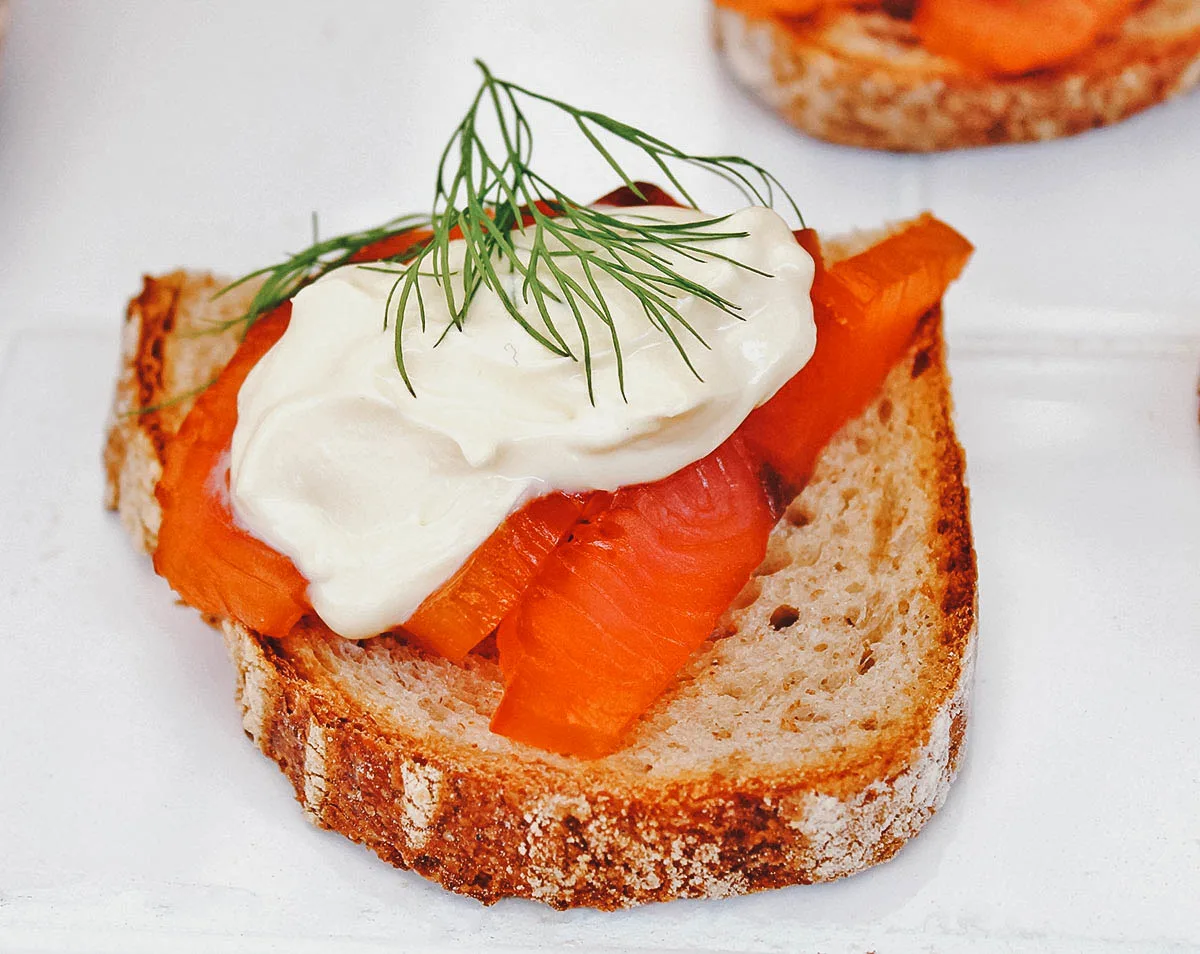
Photo by cheekylorns2 via Depositphotos
10. Gubbröra
Gubbora is a traditional dish that’s commonly served during Easter celebrations. Made of chopped anchovies, boiled eggs, chives, and dill, it’s eaten as an appetizer and makes for the perfect snack when mingling with friends.
Gubbora is usually served with knäckebröd – a type of crisp bread comparable to crackers. The name gubbröra literally means “old man’s mess”, but don’t let that deter you since this dish has nothing to do with old men.
This dish is even more delicious when paired with a glass of cold beer. It’s the perfect social food that will have you making friends in Sweden in no time at all!
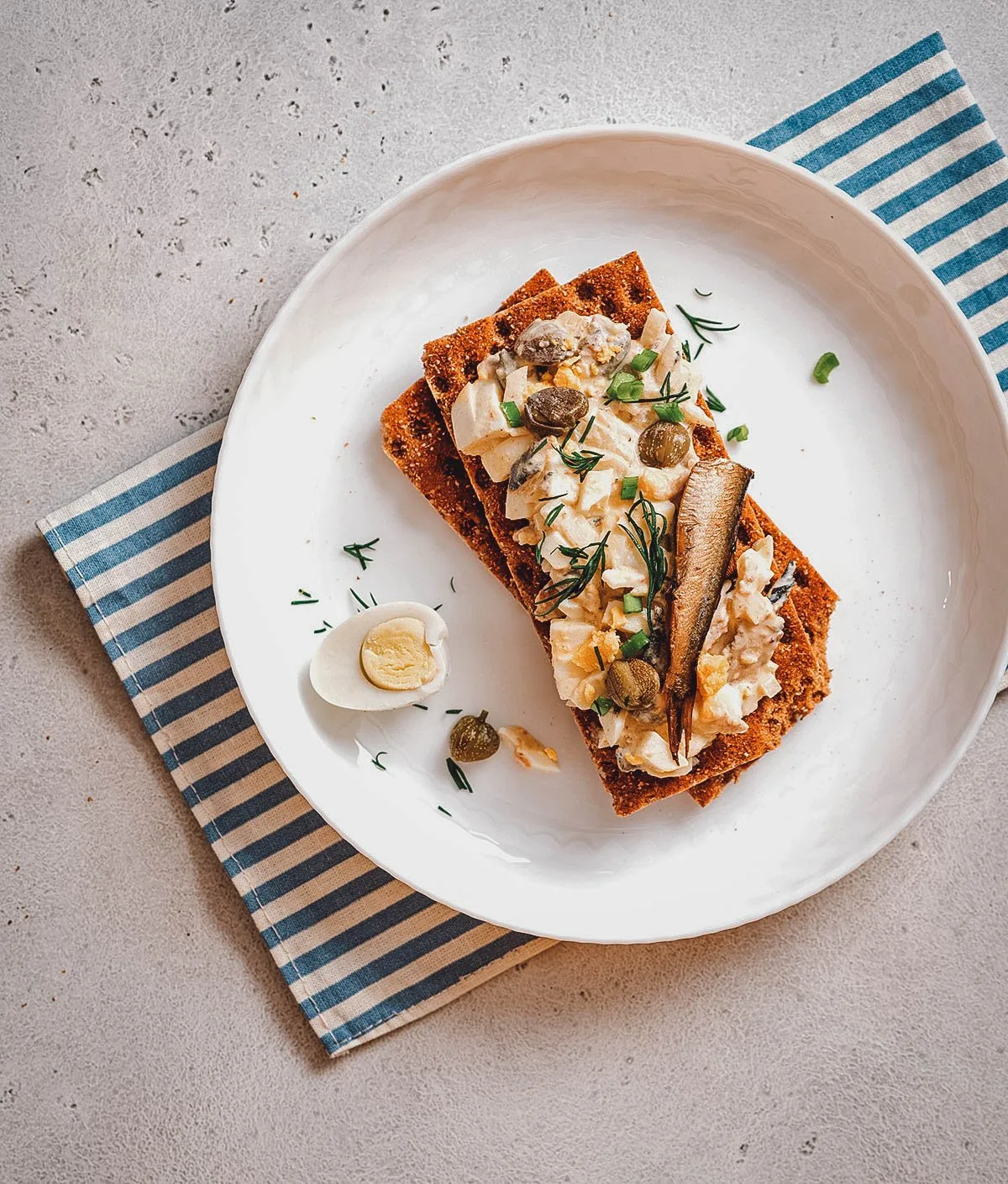
Photo by Svetlana Monyakova
11. Smörgåstårta
Picture your dream sandwich. Now make it as big as a cake and you basically have a smörgåstårta. Commonly made with salmon and seafood, this Swedish sandwich cake is layered with mayonnaise, eggs, and other tasty ingredients that will make your taste buds sing.
Smorgastarta is often served at Instagram-worthy cafes and other establishments, usually pre-cut into perfectly sized slices. It’s a dish that’s best enjoyed with a cup of good coffee.
This tasty sandwich cake is a staple dish at birthday parties and similar gatherings. If you want to try Swedish dishes that are as pretty as they are delicious, then smorgastarta is definitely for you.
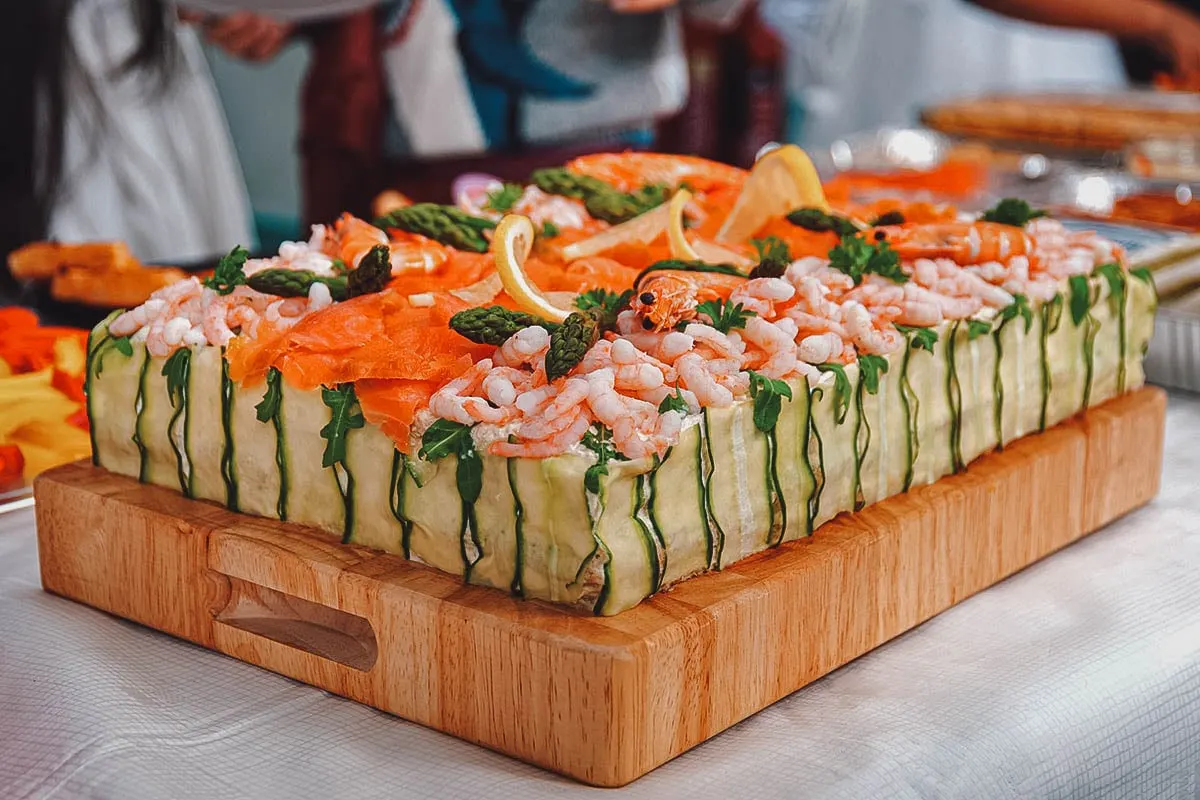
Photo by Jakub Rutkiewicz
12. Räkmacka
Rakmacka may not be as impressive as a smorgastarta but it’s just as delicious and definitely worth trying. It refers to an open-faced shrimp sandwich that’s commonly served along the coast of Sweden.
Rakmacka is a simple but delicious dish that consists of a slice of bread topped with shrimp, mayonnaise, salad greens, and a squeeze of lemon. For even more richness and flavor, you can try it with slices of hard-boiled egg as well.
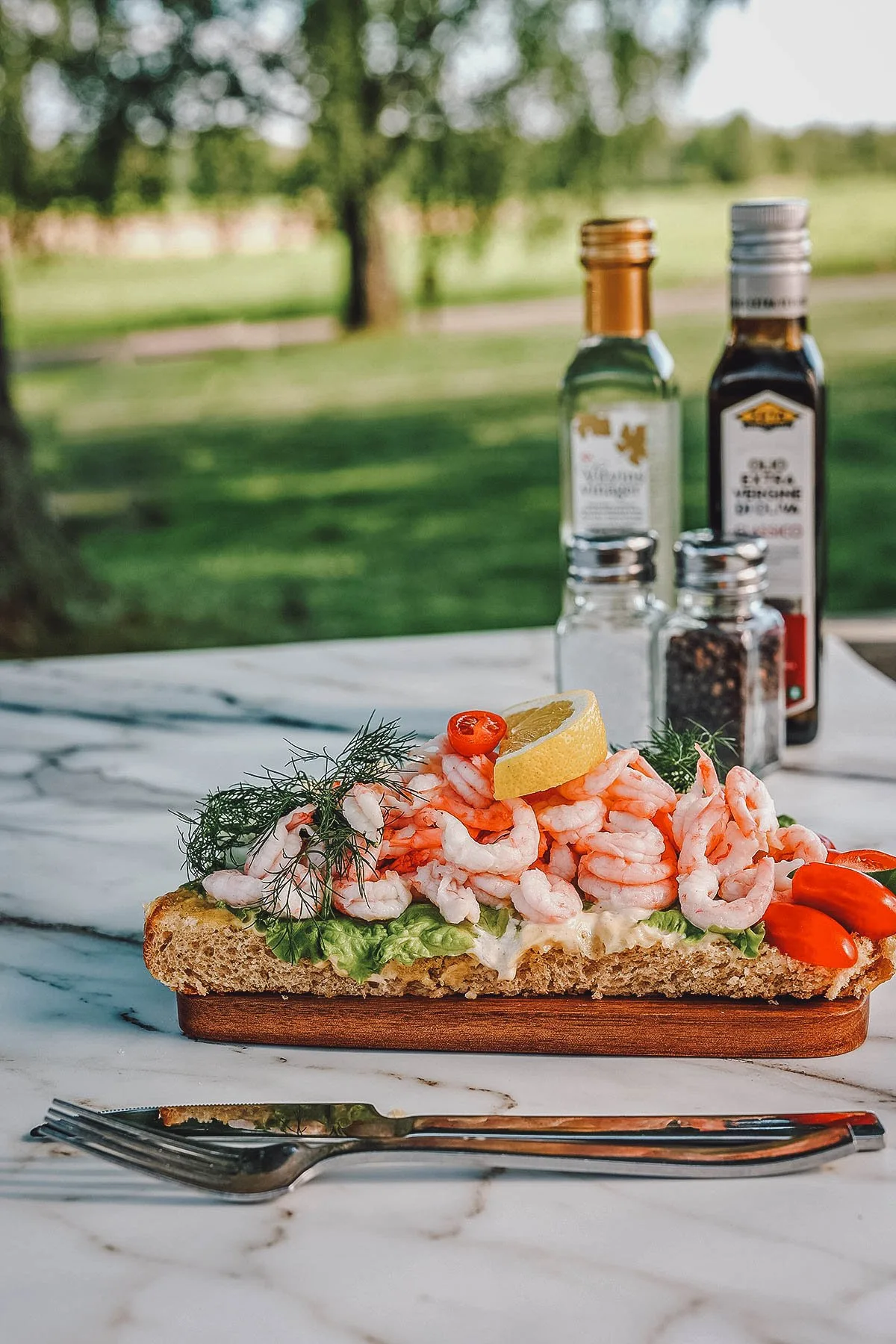
Photo by oussama el biad
13. Havskräftor
Havskraftor or langoustines are fished from the western coastal waters of Sweden. Typically served only at crayfish parties called kräftskiva on the first Tuesday of August, family and friends gather to feast on massive plates of boiled langoustines.
The taste of this luxurious seafood dish is sweet and fresh. The langoustines are always served only a few days after being caught, so if you find yourself in Sweden in early August, then I highly recommend making your way to a kräftskiva.
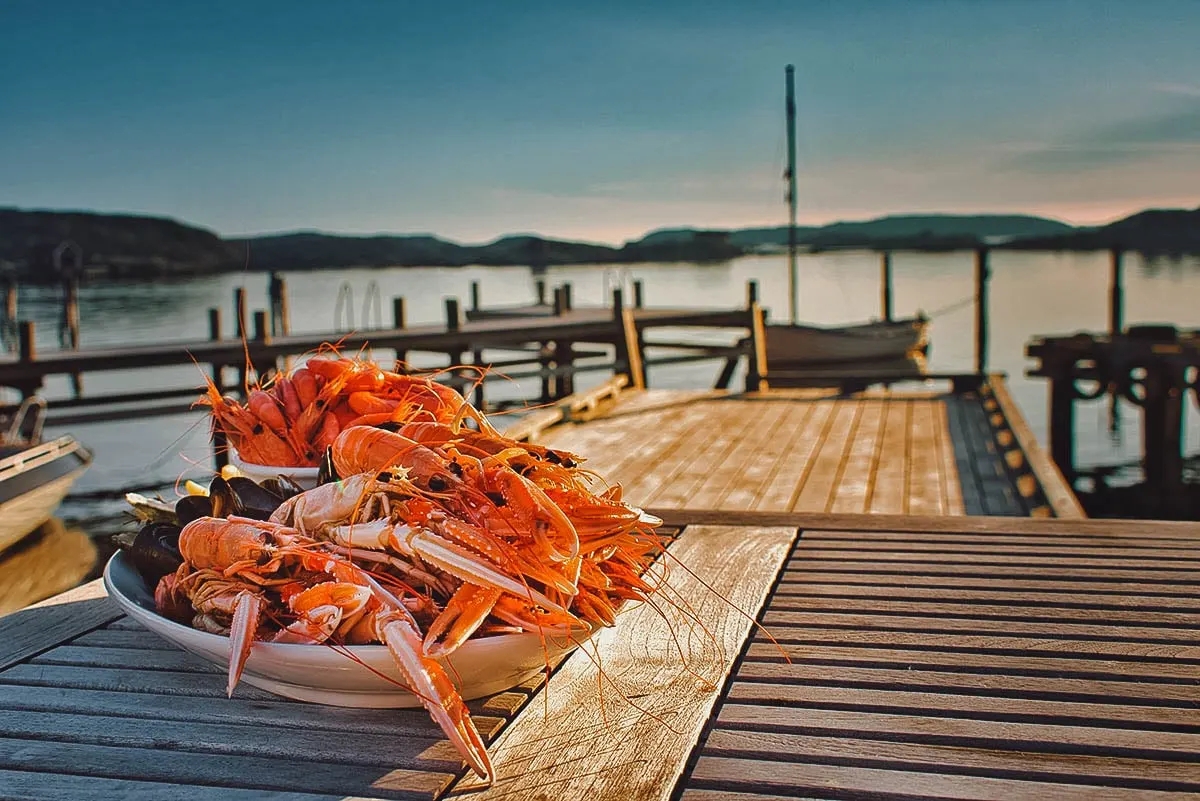
Photo by SwedishStockPhotos
MEAT
14. Svenska Köttbullar (Swedish Meatballs)
Ahh, Swedish meatballs. I get all warm and fuzzy whenever I think about this dish. Even if you’ve never visited Sweden, it’s something you’ve probably tried already if you’ve been to an Ikea.
Simply put, no list of the most popular Swedish food can ever be complete without svenska köttbulla. If you were to try just one dish from this list on your trip to Sweden, then it should definitely be Swedish meatballs.
Aside from being supremely tasty, my favorite part about this meal is that it’s readily available and fits every budget. Spend the day at Ikea and end it with some meatballs in brown sauce and a side of mashed potatoes and lingonberries. It truly is a fulfilling and delicious meal fit for all travelers.
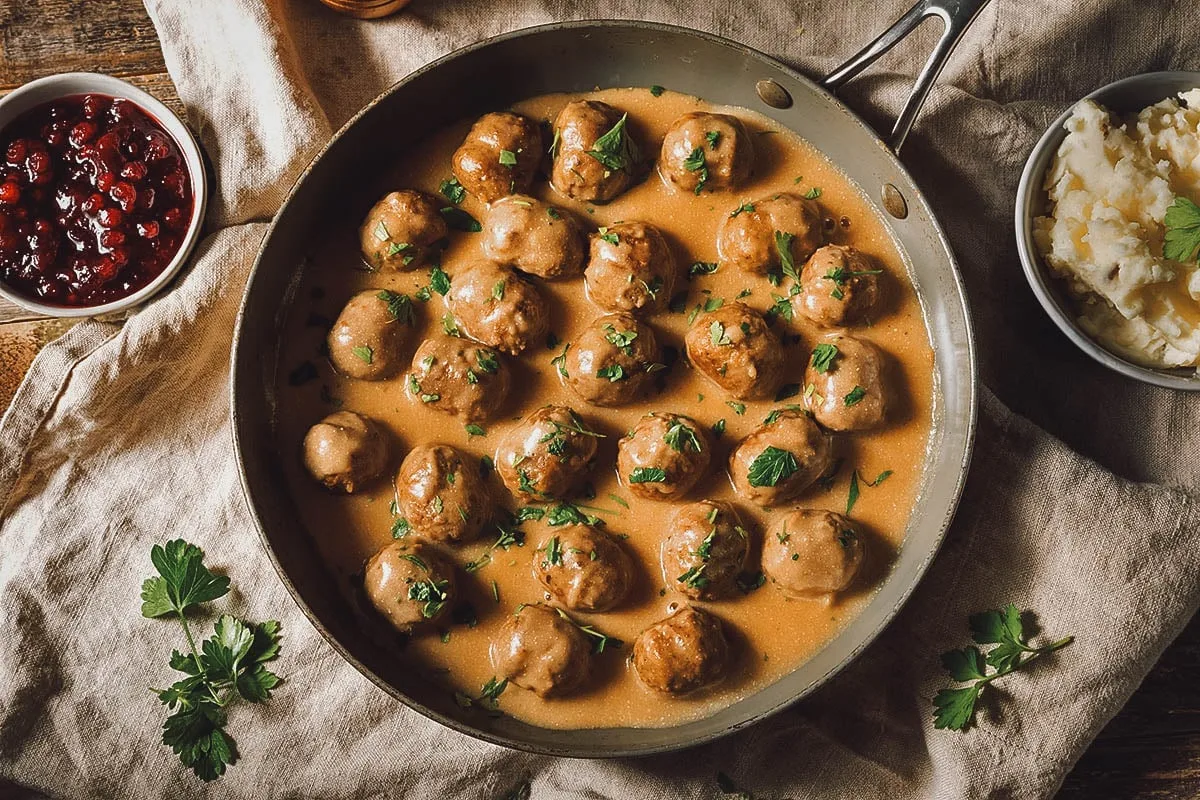
Photo by Brent Hofacker
15. Korvstroganoff
While korvstroganoff may have been inspired by the Russian dish beef stroganoff, they are nothing like each other.
Korvstroganoff is a popular Swedish meat stew made with falukorv, a type of sausage named after the Falu copper mine in the town of Falun. Historically, it was made by the locals in Falun and exported and sold in Stockholm. Swedish workers loved it so much that they attributed the name of the dish to its origin – Falun – and called it falukorv.
The popularity of falukorv has grown since then with dishes like korvstroganoff and more contributing to the more than 30,000 tons of falukorv consumed each year! Quite a staggering number considering the growing influence of western dishes across the country.
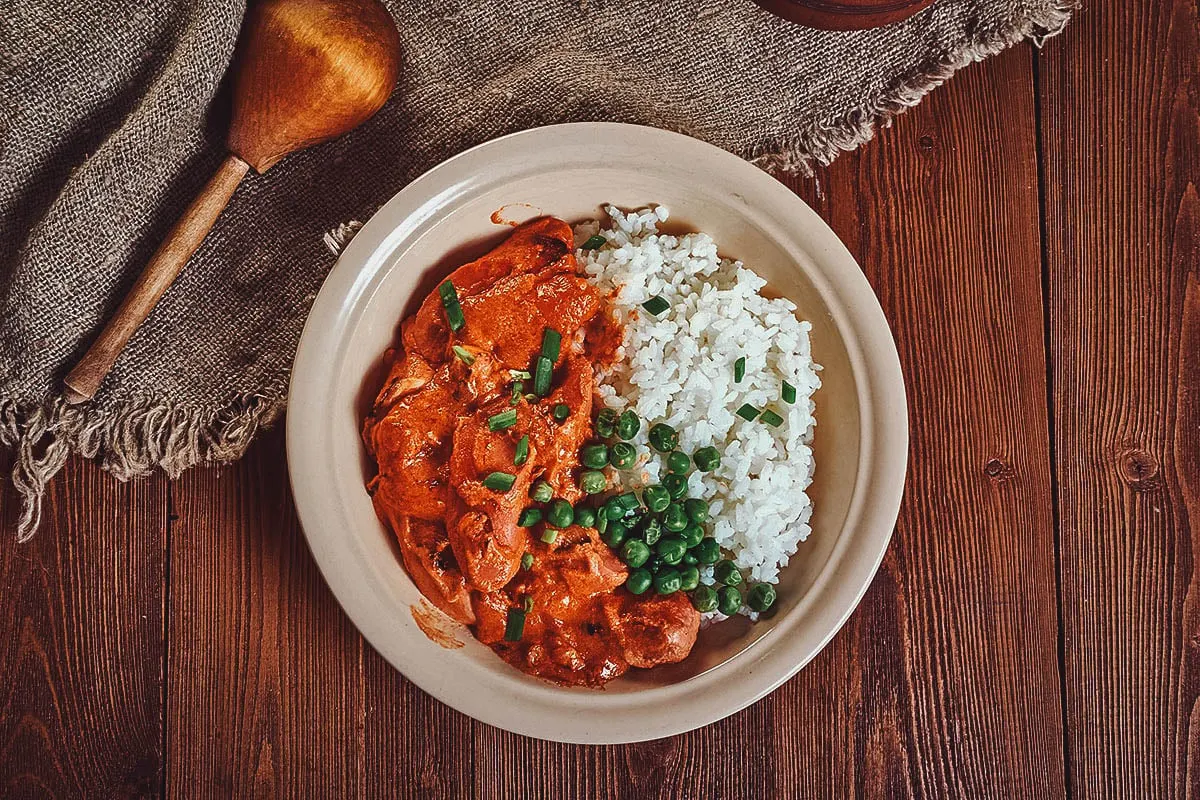
Photo by Fanfo
16. Prinskorv
Prinskorv is a small Swedish sausage that’s commonly served during national holidays like Christmas, Easter, and Midsummer.
What makes this sausage unique is how it’s prepared. The ends are cut or sliced perpendicular to each other on both ends, giving it a unique shape after frying. It’s usually served with green beans and mustard.
Fun Fact: Instituted by the Swedish Sausage Academy, Alla Korvars Dag or “All Sausages Day” is celebrated in Sweden on the 12th of March every year.
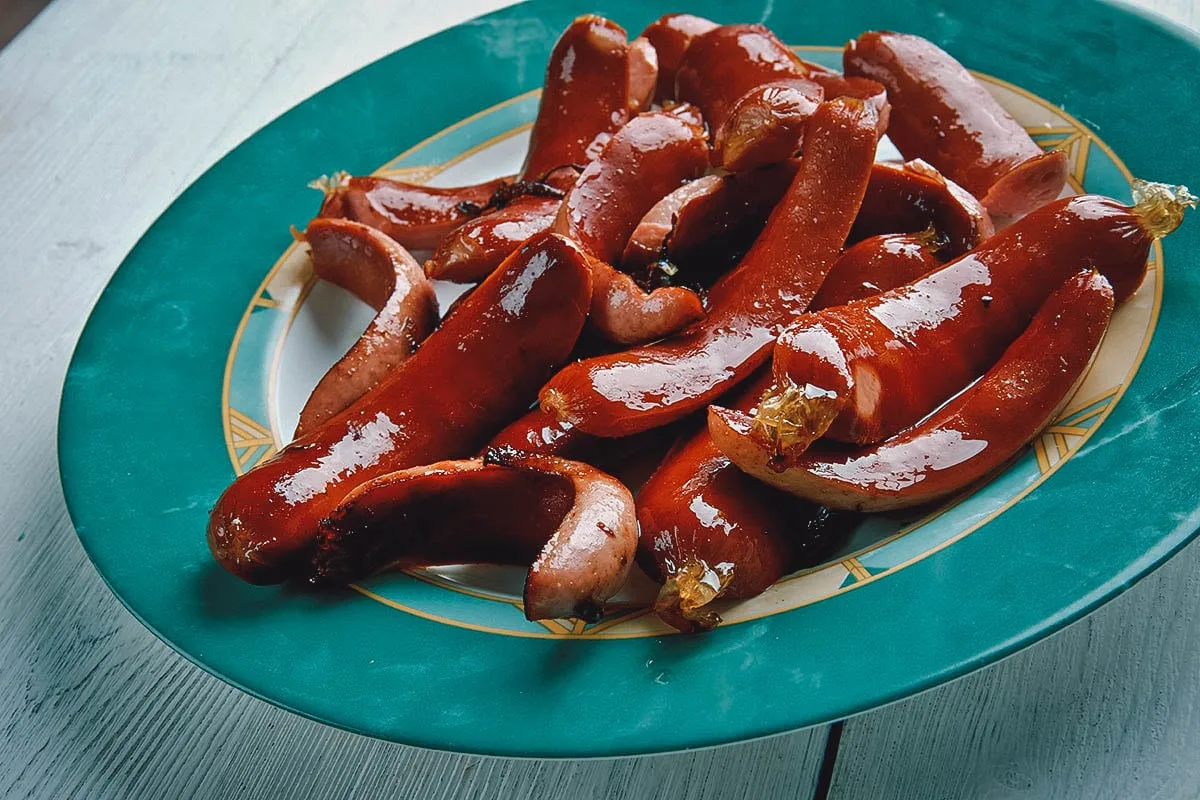
Photo by Fanfo
17. Isterband
Isterbrand is another type of Swedish sausage that’s most commonly served in the southeastern part of Sweden called Småland. Light and smokey, this pork and beef sausage is seasoned with allspice and white pepper and commonly served with mashed potatoes and lingonberry jam.
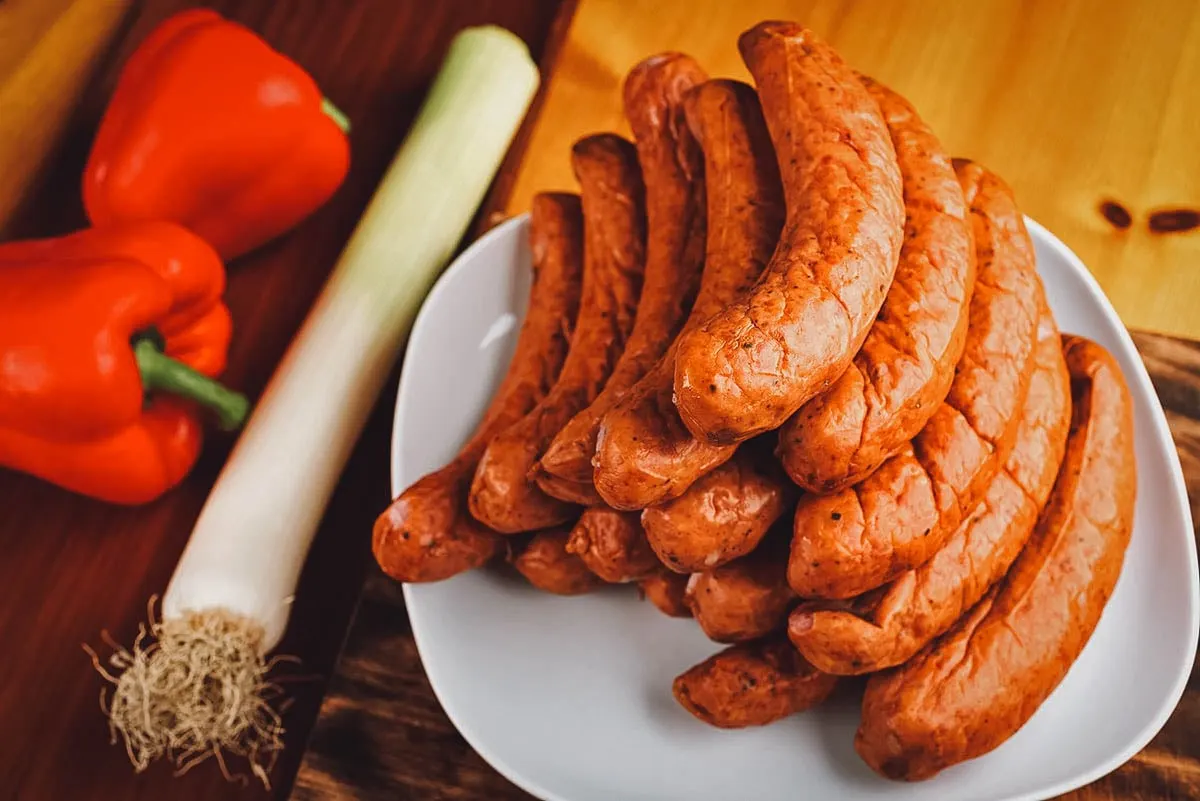
Photo by Imfoto
18. Falukorv
This is the sausage from Falun that gives substance to korvstroganoff.
This comforting sausage, as common as it is, is quite hard to find in Swedish restaurants. It isn’t considered a fancy meal but you’ll find that almost every Swede has eaten it in some way or another.
On its own, it’s best when fried and served with your favorite carbohydrate-rich food – like mashed potatoes or macaroni – and of course, lingonberry jam.

Photo by Nettan C
DESSERTS
19. Prinsesstårta
Is there a better cake to enjoy at celebrations or parties in Sweden than a soft, brilliant spongy prinsesstarta? Well, according to Swedes, none!
A prinsesstarta or “princess cake” is a soft and creamy cake made with layers of pastry cream, raspberry jam, and whipped cream topped with a tasty and smooth layer of marzipan (usually green). Vibrant and sophisticated on the outside, prinsesstarta is known for its creamy and mouth-watering softness on the inside.
Originally, the cake was named grön tårta or “green cake”. Only after the legendary Swedish food writer and home economics teacher Jenny Åkerströms included a recipe for it in her famous Princess’ Cookbook did it become known as prinsesstarta.
The cake was beloved by the princesses Margaretha, Märtha, and Astrid, daughters to Prince Carl – Duke of Västergötland – and Princess Ingeborg of Denmark. Shortly after, the cake would become known as “princess cake”.
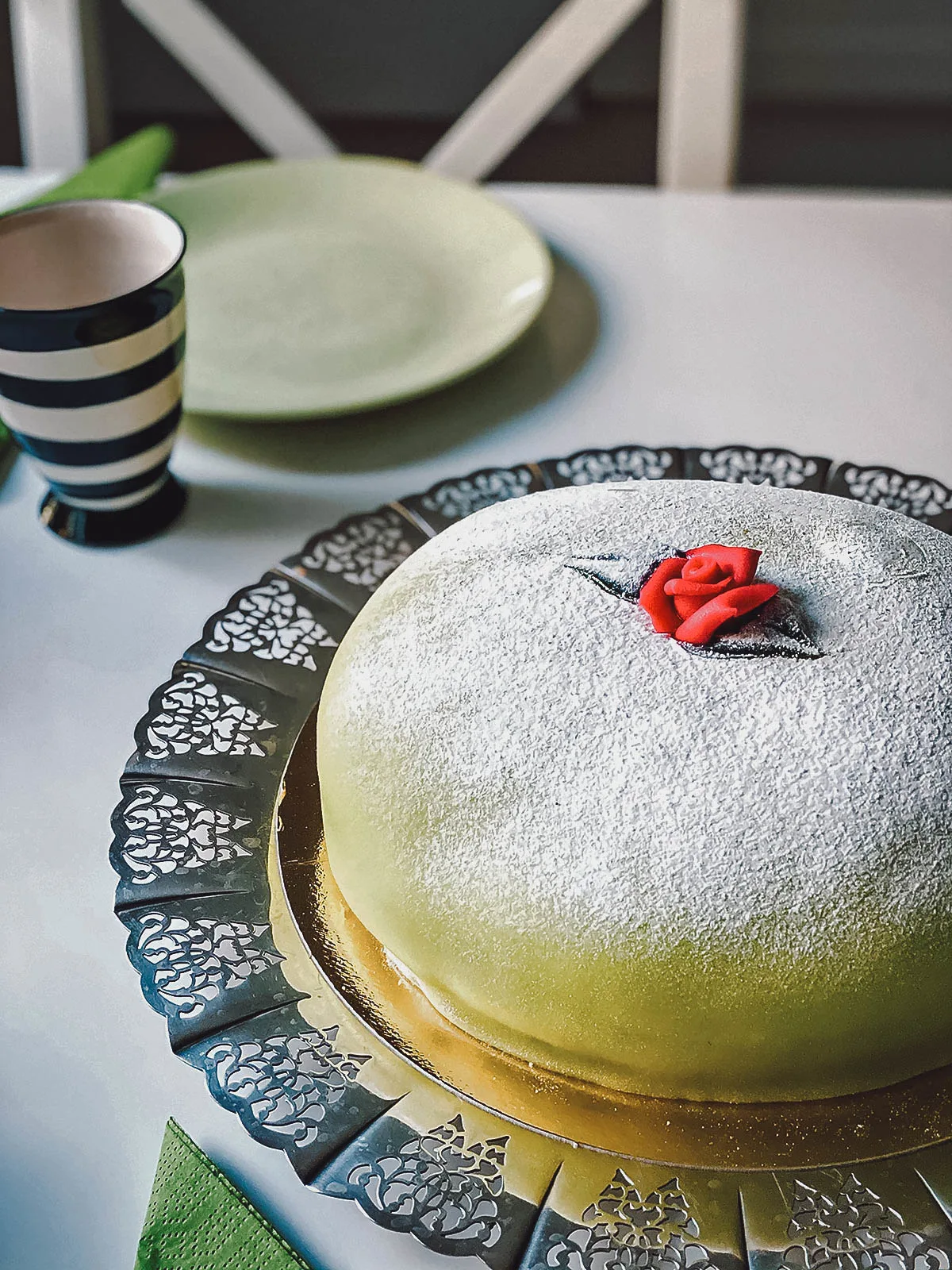
Photo by FoxglovesAndStockings
20. Smålands Ostkaka
Smalands ostkaka is a type of Swedish cheesecake that dates back to 1538, though it’s believed to have been eaten as early as the Dark Ages.
There are two distinct types of Swedish cheesecake that are not to be confused with each other as they are quite different in taste, consistency, and history. One is called hälsingeostkaka while the other is smålandsostkaka. Of the two, the latter is more popular. It’s a delicious dessert made with flour, milk, cheese rennet, almond, whipped cream, and sugar.
This Swedish cheesecake was an integral part of the farming community and was often served during larger gatherings where different groups of people brought their own dish. The småländska cheesecake was the evening’s highlight for most.
Now if you want to relive their ways, it’s perfectly acceptable to leave your manners at the door because it’s a tradition to eat the cake inside out. Some believe that back then, the copper bowls where the cakes were served had a layer of tin that often cracked. The toxic copper would mix with the cheesecake so it was customary to serve the more important guests the inside of the cheesecake first.
Others believe that this inside-out eating tradition stems from the simple fact that the most delicious part of the cheesecake was in the middle, so that part was served to the most important guests first.
Whatever the reason, smålands cheesecake is delicious and something you need to try when you visit Sweden.
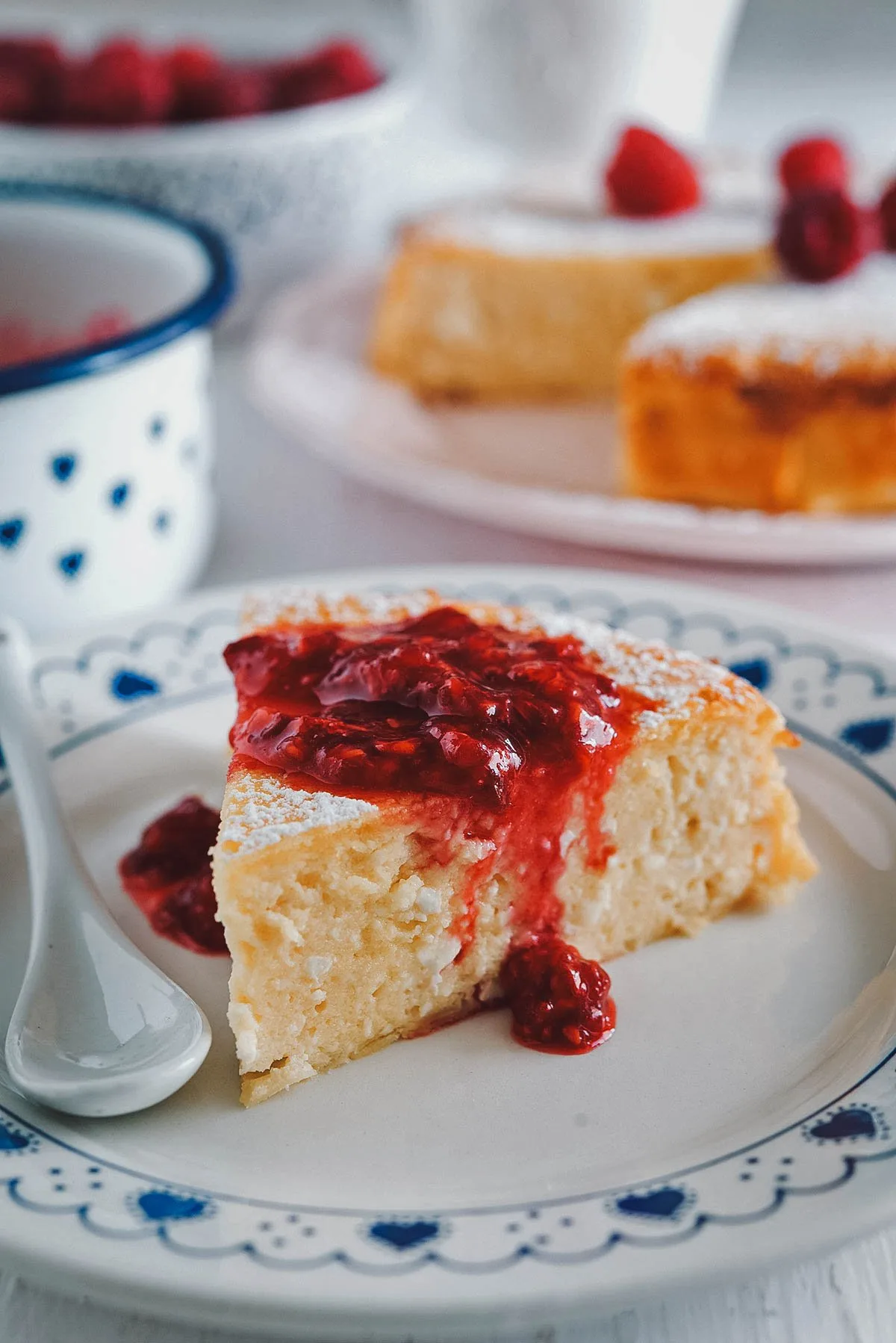
Photo by pingpongcat
FINAL THOUGHTS ON TRADITIONAL SWEDISH FOOD
Swedish cuisine will give you a host of different dining experiences. Whether you’re a seafood lover or have a sweet tooth, rest assured, we have something delicious for you.
Many Swedish culinary traditions have been passed down through the generations, so you’re practically guaranteed to enjoy a meal that’s been eaten for hundreds, if not thousands of years. Ranging from simple but satisfying comfort food to expensive, locally sourced seafood, you’re guaranteed to have a delicious time in Sweden.
So, what Swedish dish from this list are you looking forward to the most?
Cover photo by Brent Hofacker. Stock images via Shutterstock.


Jonas
Friday 13th of January 2023
Boring and obvious list. It's what's on every boring tourist food list. Prinskorv, falukorv, korv stroganoff, really!?!? There's much more interesting food to try... Biff Rydberg, Wallenbergare, sjömansbiff, renskav, rökt renhjärta, kebabpizza, tjälknöl... There are some more memorable dishes rather than the boring [redacted] on this lazy list.
Eve
Friday 12th of May 2023
@JB & Renée, Thank you for taking the time to put out these lists. Some of us are indeed ignorant outsiders who want to learn and start from *somewhere*.
JB & Renée
Saturday 14th of January 2023
Tranquilo amigo! It's just a food list. No need to get so worked up. What did falukorv ever do to you? :)
In all seriousness, we don't normally allow rude or disrespectful comments on this website. I've published yours (with some redaction) because you've provided value by offering more dishes for tourists to try in Sweden. Thank you for that and all the best to you. Cheers!